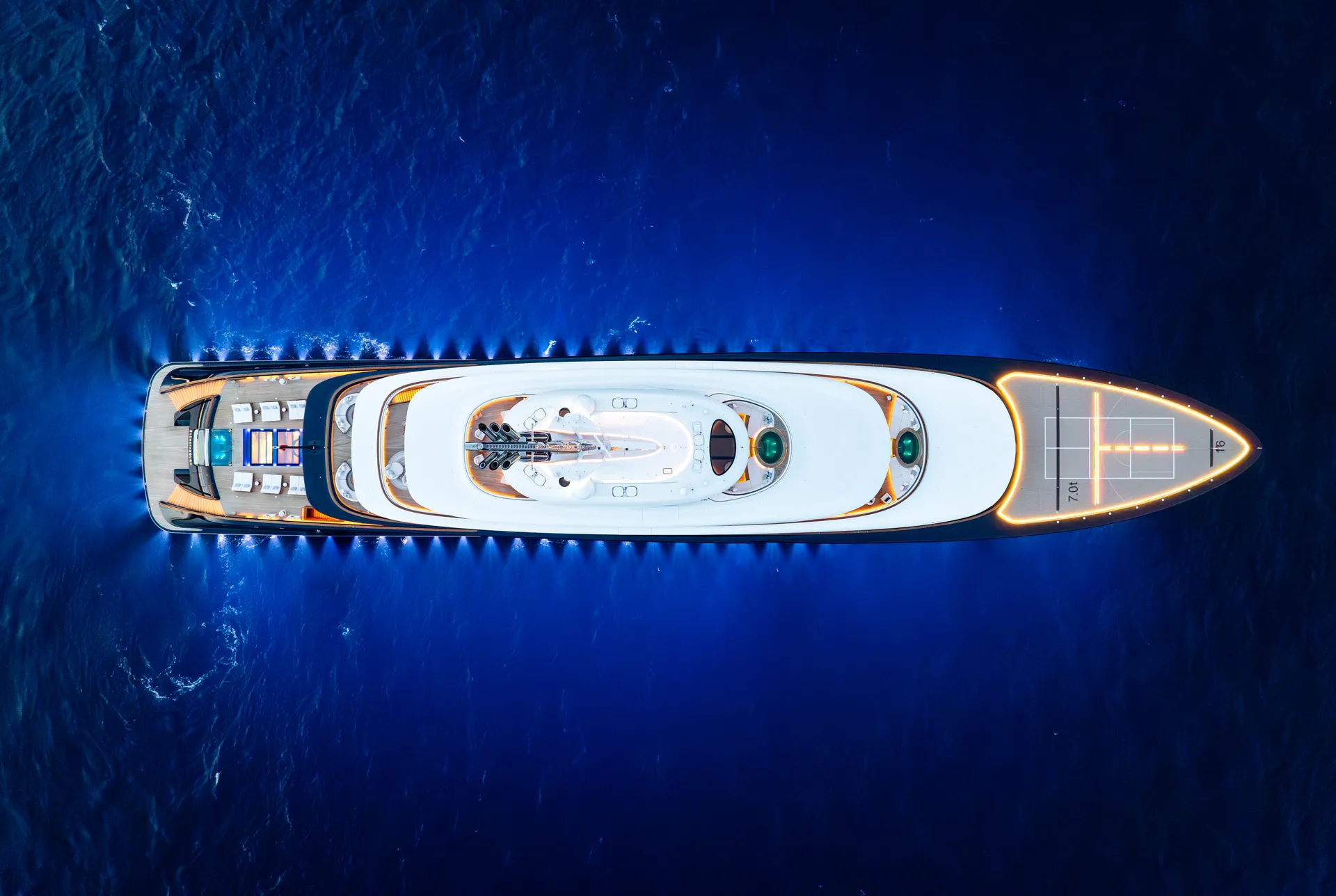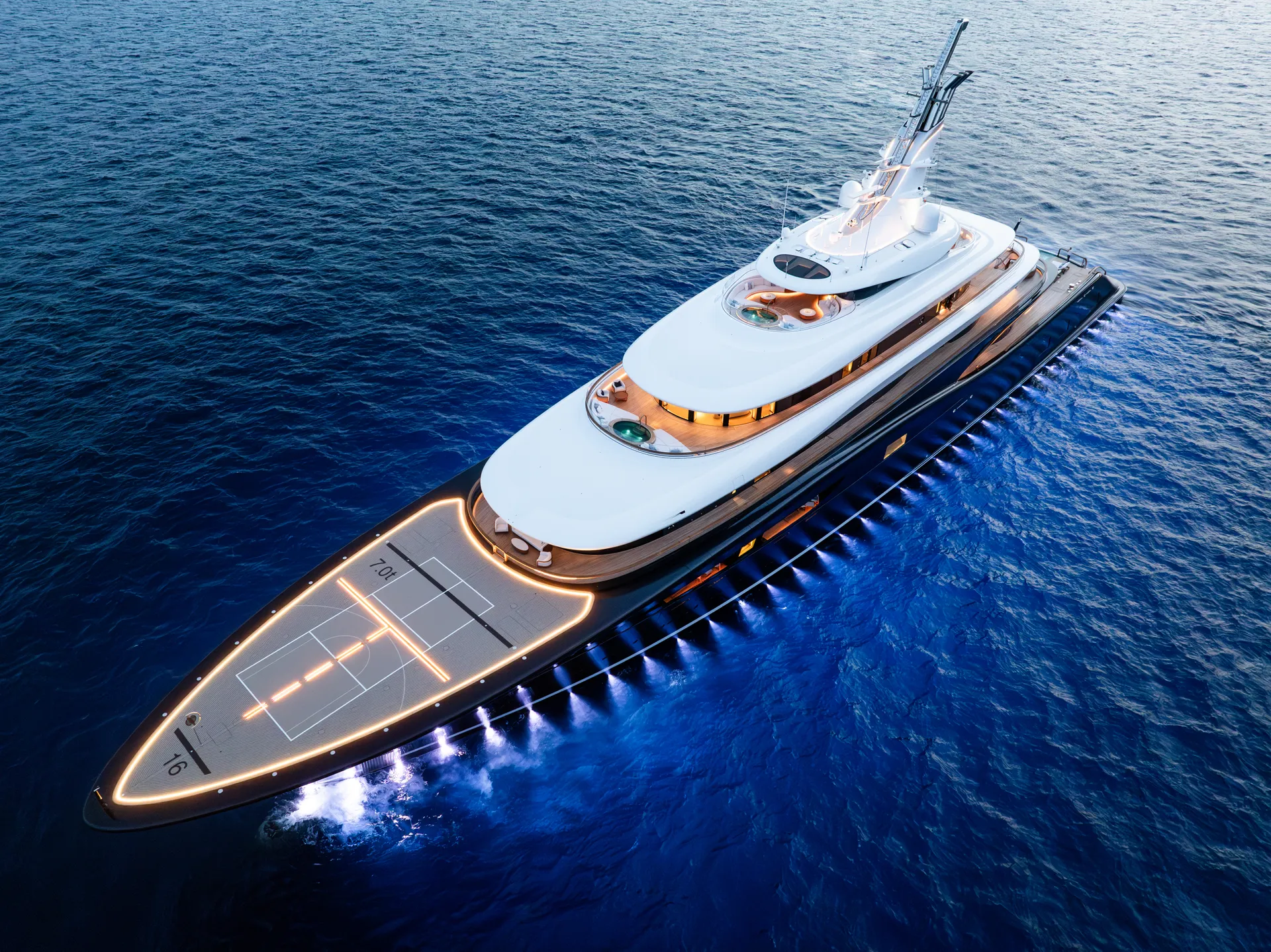Edmiston has closed what it calls the most significant brokerage deal in history, handling both buyer and seller in the sale of Breakthrough, a 119-meter Feadship styled by RWD. The numbers matter. It is the largest Feadship ever completed, the largest yacht delivered in the Netherlands, and, crucially, the first superyacht powered by hydrogen fuel cells to hit the brokerage market. Terms of the deal were not disclosed.
Breakthrough has carried a certain mythology since her launch. She was widely reported to have been commissioned by Bill Gates, though it is said he never actually stepped aboard. That association gave the project visibility, but her real claim lies in what she represents. Breakthrough is the world’s first hydrogen fuel-cell superyacht, and she enters the market with a level of craftsmanship and amenities that set a new standard.

What does “first hydrogen fuel cell superyacht” mean in practice? It means propulsion that can deliver stretches of cruising with no tailpipe emissions and far less noise than conventional engines. Imagine a near-silent glide across a flat morning sea, where the dominant sound is wake whispering against the hull and the air carries salt and teak oil rather than diesel fumes. This is not a concept or render. It is delivered hardware, now in private hands and available for charter through Edmiston.
The design brief reads as a statement of intent. RWD’s lines are disciplined rather than showy, using length and proportion to carry the volume with grace. Feadship’s build quality remains the benchmark at this end of the market. In photographs, surfaces appear taut and reflective, catching low evening light the way a tailored lapel catches a crease. There are no gimmicks, only a visible confidence in engineering and finish.

Culturally, Breakthrough matters for two reasons. First, it takes the idea of sustainable luxury out of marketing copy and into the machinery itself. Hydrogen fuel cells are not a complete solution, and the realities of producing and supplying green hydrogen remain complex. Infrastructure is in its infancy, limited to select regions. Yet a fully operational yacht that can run emissions-free for periods at sea marks a significant departure from incremental gains. It frames quiet, clean movement as the new definition of status at this level.
Second, Breakthrough will charter exclusively through Edmiston. That decision places advanced technology within reach of experienced charterers, not just an owner’s family office. Guests can expect a different sensory register on board. The mood at anchor should be calmer, with fewer mechanical vibrations and a softer acoustic footprint. At night, broader skies and darker water, unclouded by exhaust haze, become part of the experience.

For the industry, the sale delivers a clear message. Innovation is no longer waiting in the shipyard until infrastructure catches up. It is entering circulation and making demands on marinas, fuel suppliers, and regulators to move faster. Feadship’s record length here is almost secondary. The real story is a technological and cultural pivot enacted by a client unwilling to wait for consensus.
There will be debate. Hydrogen’s lifecycle impact depends on how it is produced, and global refueling standards remain unsettled. It is reasonable to ask whether this is progress or optics. The fair answer is that it is both. Breakthrough is a symbol, but also a system, and the system works. A 119-meter platform using fuel cells, delivered and sold, is a provocation the rest of the fleet will need to answer.
In the meantime, Breakthrough establishes a new baseline for what a flagship can be. It is large, yes, but it is also quiet, cleverly restrained, and purposefully future-facing. For a modern gentleman choosing where to spend time and what to endorse with his presence, that combination carries more weight than another helipad ever could.
Read more about yachts here.